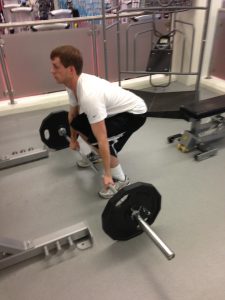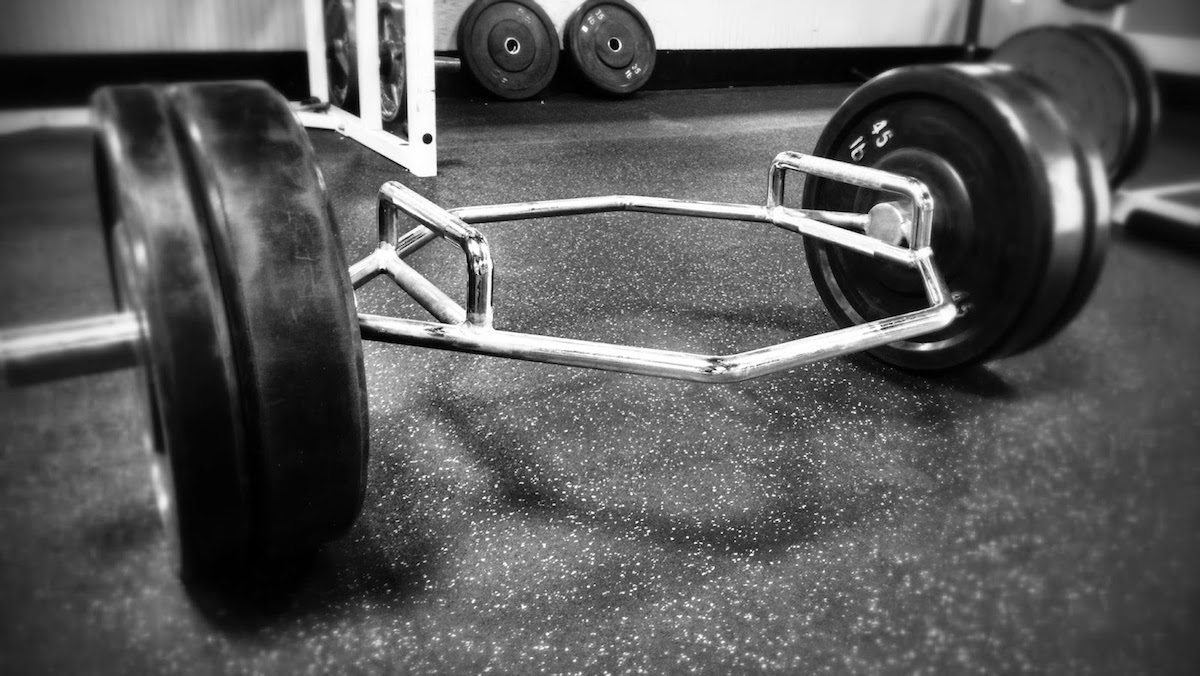In recent years, the hexagonal deadlift (i.e. the trap bar) has gained in popularity with athletic strength and conditioning circles. The argument is that it puts the body in a safer position to perform the deadlift and may allow for more weight to be lifted. Some coaches swear by this exercise.
Like a lot of “new” things, there is resistance to this. In the Journal of Strength and Conditioning Research, Lockie et al compared the conventional deadlift to the high handled hexagonal deadlift. The authors had subjects with weight training experience perform 1-RMs on the two lifts with a linear position transducer attached.

Results:
- The 1-RM on the hexagonal deadlifts was almost 15% greater than the conventional deadlifts.
- During the 1-RM lift on the hexagonal deadlift, the bar traveled less distance (almost 22% less) and took less time (almost 25% less time).
- Peak power was greater during the hexagonal deadlift (almost 47% greater) and mean power was also greater during the hexagonal deadlift (approximately 11% greater).
- Peak and mean velocity were both greater on the hexagonal deadlift (almost 22% and 7% respectively).
- Peak and mean force were both greater during the hexagonal deadlift (almost 20% on both).
So, let’s put the results into plain language. The athletes lifted more weight during the hexagonal deadlifts than the conventional deadlifts. They lifted this weight faster during the hexagonal deadlifts than the conventional deadlifts. Due to this, the hexagonal deadlifts had higher power outputs, higher force outputs, and higher velocities.
Before we get into some implications, let’s look at limitations. First, the subjects were able to deadlift (on average) around 175% of bodyweight using the conventional deadlifts. So these were not elite powerlifters that were being studied. This may have impacted the results. Second, it’s not a training study. That means we cannot draw conclusions about performing hexagonal deadlifts over time and their impact on athletes. Third, it’s not studying athletes and this means we always have to be careful about applying the results to a different population.
Another point. Even though the hexagonal deadlifts were “better” (more on this in a minute), the power outputs still don’t approach those seen in the Olympic lifts. The power outputs per kilogram lifted ranges from 3 W/kg to 6 W/kg depending on if you are looking at mean power output (3 W/kg) or peak (6 W/kg). This does not approach the values in the 30 W/kg range that Garhammer reports for the Olympic lifts.
Now, the study has some interesting implications. First, the hexagonal deadlifts allow for more weight to be lifted. If I’m working with athletes and have limited time to train t hem, I want exercises that allow for more weight to be lifted so that I can build bigger, stronger, more explosive athletes. Second, the increased velocity and power outputs of the hexagonal deadlifts is going to be important for the training of athletes. If I have two exercises and limited time, and one exercise allows for more weight to be lifted more explosively then I’m going to pick that exercise.
So, it’s a really interesting study and I’d like to see more on this. Maybe a study looking at the long-term training effects of the hexagonal deadlifts.
References:
Garhammer, J. (1993). A review of power output studies of Olympic and powerlifting: Methodology, performance, prediction, and evaluation tests. Journal fo Strength and Conditioning Research, 7(2), 76-89.
Lockie, R.G., et al. (2018). The 1 repetition maximum mechanics of a high-handle hexagonal bar deadlift compared with a conventional deadlift as measured by a linear position transducer. Journal of Strength and Conditioning Research, 32(1), 150-161.


